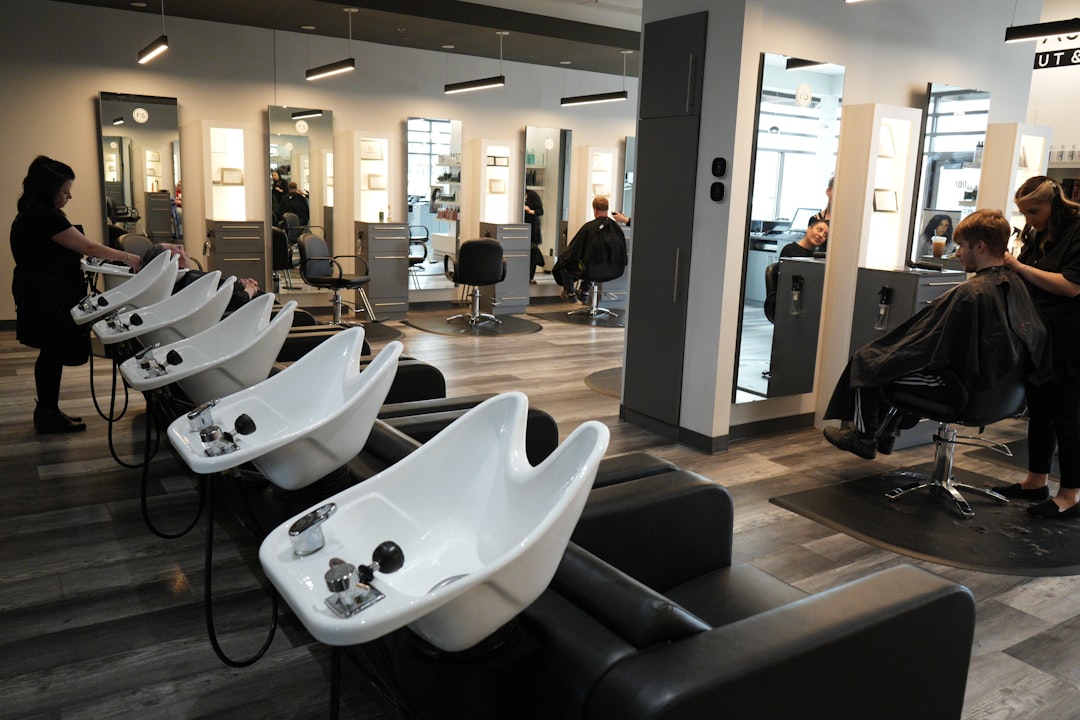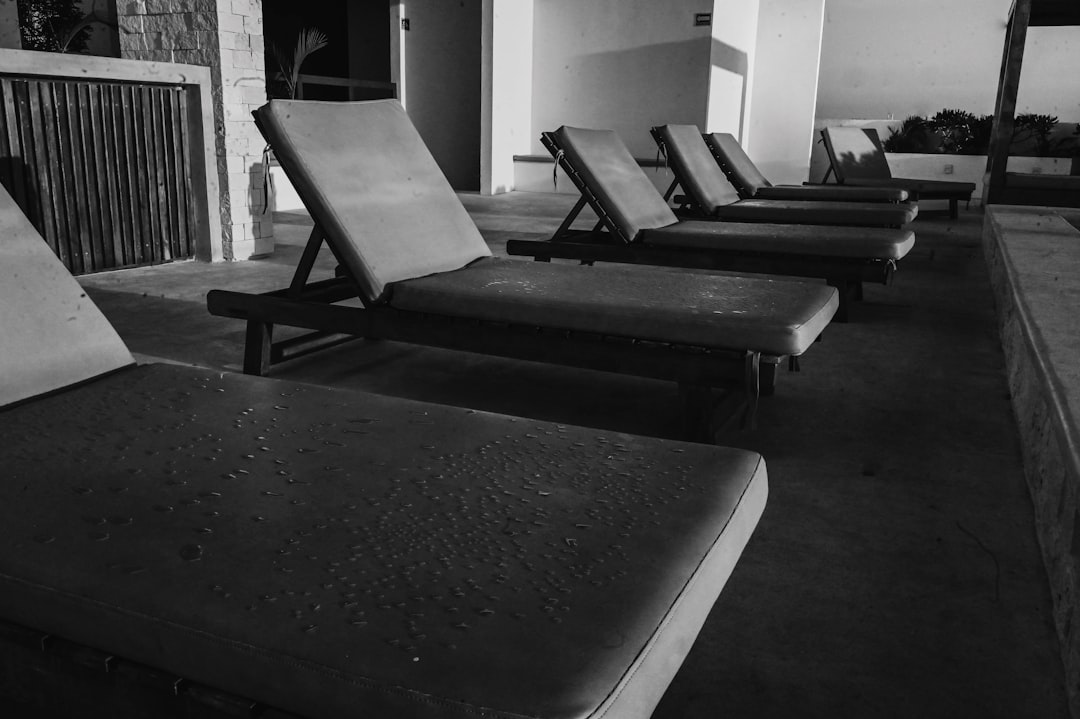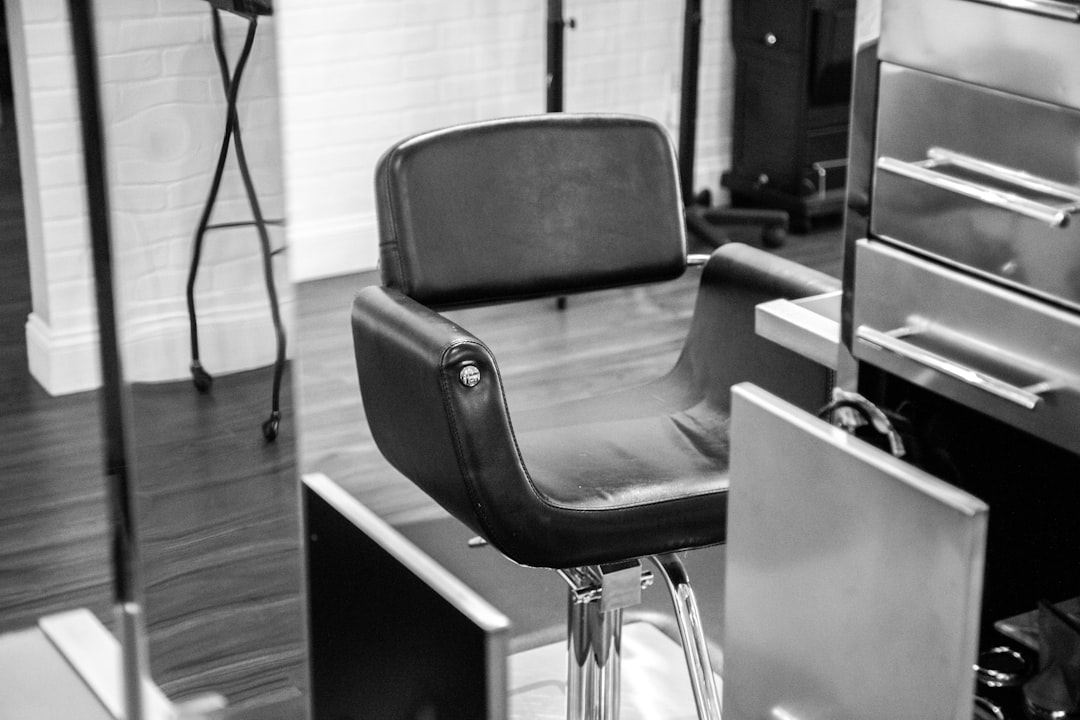

Engage prospects with a scan and streamline customer engagement with FREE QR code marketing tools by Sona – no strings attached!
Create a Free QR CodeFree consultation

No commitment

Engage prospects with a scan and streamline customer engagement with FREE QR code marketing tools by Sona – no strings attached!
Create a Free QR CodeFree consultation

No commitment
In today's digitally driven landscape, massage chair retailers face increasing challenges in meeting evolving customer expectations and maximizing every interaction. Traditional methods such as printed brochures, in-store promotions, and manual registration forms often leave gaps where high-value opportunities slip through the cracks. For example, potential buyers may browse in-store or interact with displays yet never make themselves known, resulting in missed follow-up and lost revenue.
Modern technologies like QR codes help bridge these gaps, offering a seamless pathway from physical engagement points to digital actions. By empowering instant payments, data capture, or post-purchase engagement, QR codes transform fleeting interactions into actionable leads and rich customer profiles, all while reducing friction for both buyers and staff.
For massage chair retailers, QR codes add measurable, scalable ways to engage prospects, capturing signals from showroom demonstrations, promotional materials, and after-sales touchpoints. Instead of relying on generic forms or static signage that often leave anonymous traffic untracked, retailers can now connect offline intent to online behaviors, gaining the visibility needed to nurture and convert every possible lead.

Many retailers still rely on outdated workflows, resulting in missed engagement opportunities when customers do not provide contact details or when staff are too busy for manual follow-up. This can mean high-intent showroom visitors leave without a trace, and valuable signals never reach marketing or sales teams. Paper brochures, paper warranty forms, and manual loyalty cards create friction and data gaps that undermine retention efforts.
QR codes create a bridge between physical visits and digital touchpoints, minimizing the chances of losing high-value prospects who otherwise go untracked. By turning every chair, sign, or receipt into a direct route to action, you can build an always-on system that captures interest, triggers timely follow-up, and grows customer lifetime value. Here is how to implement them for stronger customer retention:
Transitioning from manual processes to digital does more than capture more leads. It reveals previously invisible engagement, improves data quality, and equips your team to tailor follow-up by intent and timing. Platforms such as Sona QR make campaign creation, management, and analysis straightforward, so every scan becomes a signal you can act on.

Massage chair retailers often struggle with anonymous in-store browsers and fragmented customer data, which makes it difficult to follow up or personalize offers. Print ads, window clings, and storefronts are expensive to produce yet provide little insight into who engaged with them, so teams cannot prioritize hot leads or track the impact of campaigns across locations.
QR codes address these challenges with a simple scan. When shoppers interact with codes on showroom signage, demo chairs, price labels, receipts, or delivery paperwork, retailers can capture interest and guide people toward next steps. That might mean a paid demo, a product comparison, a loyalty sign-up, or a warranty registration. Each scan becomes both a customer benefit and a data point that improves future engagement.
By making previously hidden interest visible and automating the synchronization of scan data into your CRM, retailers open the door to more responsive, data-driven marketing. This approach reduces missed opportunities and supports segmentation based on real behavior rather than assumptions.

Retailers often face the hurdle of collecting the right information at the right moment. A smart QR strategy matches format to desired action so you remove friction and set yourself up for measurable results. In massage chair retail, several formats stand out.
Dynamic QR codes deserve special emphasis. They allow you to update the destination after print, attach UTM parameters for clear attribution, and analyze performance by campaign or location. With Sona QR, you can generate, edit, and manage all formats centrally, so your team can deploy quickly and improve continuously.

High-value opportunities are often missed when codes are hidden, poorly framed, or disconnected from a clear customer benefit. In massage chair showrooms and pop-up displays, visitors need obvious prompts that match their moment of intent. Generic codes buried in multi-page flyers do not perform, and demo chairs without a clear action path lose potential revenue and data.
Start by mapping your store and identifying hotspots for curiosity and decision-making. Add QR codes that align with specific actions at each spot. Revisit placements weekly at first, using analytics to refine your approach. A thoughtful placement strategy can shift a passive interaction into a strong signal of buying intent that your team can act on.
Customizing QR strategy for each asset ensures you capture data at critical journey points. The result is a consistent stream of measurable leads and more precise attribution, both of which are essential for profitable growth.

Retention and revenue often suffer when there are no mechanisms to identify, retarget, or nurture interested prospects. The following use cases are proven in massage chair retail and map to real customer moments.
These examples illustrate how QR code integration turns both exploratory and transactional interactions into actionable data. As your dataset grows, you can tailor content and offers by model interest, session length, or service preferences.
A major frustration for retailers is the inability to reconnect with in-store visitors who display strong interest but never identify themselves. Unique QR codes assigned to demo chairs, signage, or post-sale materials change that dynamic. Each scan captures intent, context, and timing so you can nurture with precision rather than guesswork.
By sending scan events into your CRM and ad platforms, you build segments that mirror your buyer journey and reflect real behavior. This makes it possible to deliver relevant content quickly, such as comparison guides for consideration-stage scanners or accessory offers for recent buyers. The result is more efficient spend and higher conversion at each stage.
For massage chair retailers, useful audience distinctions include residential buyers vs. commercial purchasers, new prospects vs. repeat demo users, and post-purchase owners vs. service plan candidates. Each group deserves a tailored message that addresses their specific goals and constraints.
Disconnected offline and online campaigns lead to fragmented experiences and lost conversions. QR codes act as connective tissue that unifies your channels into one measurable journey. Each scan tells you which surface sparked action, which message resonated, and how a visitor progressed across touchpoints.
In practice, this means embedding codes into the media your audience already sees and using a platform like Sona QR to manage variations by store, campaign, and audience. You gain a granular view of performance and the ability to optimize placements and creative with real-time insights.
QR codes serve as the offline onramp to your digital marketing engine and unlock measurement across channels that were previously opaque. With centralized management in Sona QR, you can deploy at scale and sync scan data to your CRM for end-to-end attribution.
Failing to structure QR campaigns can lead to inconsistent execution, poor data quality, and weak attribution. A simple process ensures that each campaign is tied to a clear business outcome and has the tracking required to measure impact. Treat your QR efforts like any performance channel, not a set-and-forget tactic.
Start with a single, high-leverage use case such as capturing more demo leads from display chairs. Build a quick feedback loop: deploy, measure, optimize. As your team gains confidence, expand to additional placements and audiences while keeping naming, tagging, and data flows consistent across campaigns.
By treating campaign execution as a repeatable process, you avoid guesswork and wasted effort. Over time, you will build a data-driven playbook that your team can apply to new stores, new models, and new seasonal campaigns without starting from scratch.
One of the most common frustrations among massage chair retailers is investing in engagement assets that generate activity but give no clarity on whether they drive sales or retention. Without visibility into the journey beyond the scan, you are left to hope that interest turns into revenue. That is not a reliable strategy for high-ticket retail.
Modern QR platforms provide analytics that go far beyond scan counts. With Sona QR for creation and tracking, and Sona.com for attribution and identity resolution, you can connect scans to pipeline and revenue. See Sona’s Essential Guide to Offline Attribution. This helps you decide which placements deserve more budget, which messages convert best, and where customers drop off so you can fix it quickly.
With this level of visibility, you can turn engagement into predictable outcomes. Instead of guessing which surfaces matter, you will know exactly which chairs, signs, and messages create customers and which need improvement.
Even innovative deployments can underperform without structure, clean data, and consistent enablement. A few best practices will help you scale QR programs that retain customers and grow revenue across locations.
Creative deployment ideas include QR-enabled maintenance reminders for commercial clients that link to service scheduling, or in-store gamification where customers collect scans on different models to earn a VIP demo. These approaches drive engagement while building segments you can nurture over time.
Retailers often miss out by not capturing signals from every step of the customer journey, which leads to incomplete follow-up and weak attribution. Brands that integrate QR codes across key surfaces are seeing both better data and improved conversion.
Look beyond single-use cases by creating a cycle of engagement, feedback, and advocacy. As you add surfaces and tie them into a shared analytics view, you will see clearer patterns in buyer behavior and more opportunities to personalize offers at the right time.
A key pitfall is treating QR codes as generic add-ons rather than high-value levers for engagement and segmentation. If your codes drive to vague landing pages without compelling next steps, performance will stall. Inconsistent tagging or a lack of CRM integration also leads to data that cannot drive decisions.
Expert insights focus on clarity, context, and iteration. Make sure every code has a purpose aligned to a buyer moment and a measurable outcome. Then, test placement and language often so you can strengthen the results that matter.
The most successful retailers invest in segmentation and automation, converting in-store engagement into measurable pipeline. With the right processes, you can reduce reliance on manual follow-up and grow a base of loyal, high-value customers who receive timely, relevant communication.
QR codes have evolved beyond simple convenience to become a strategic solution for longstanding industry challenges in massage chair retail. By transforming every showroom interaction, print asset, and service touchpoint into a data-rich engagement, retailers address common pain points like lost prospects, anonymous traffic, and manual follow-up gaps. This shift replaces guesswork with precision and equips teams to move faster with greater confidence.
Features such as instant payments, loyalty automation, and CRM enrichment ensure that engagement signals are not lost but surfaced for timely action. When you can attribute scans to revenue and personalize follow-up based on behavior, you unlock a unified customer journey that ties offline intent directly to online outcomes. The result is better experiences for customers and higher lifetime value for the business.
If you are ready to get started, choose one high-intent surface, deploy a dynamic QR code with a clear benefit-driven CTA, and measure the impact for two to four weeks. Platforms like Sona QR and Sona.com make it easy to generate codes, track performance, sync data to your CRM, and attribute results to revenue. In minutes, you can create your first code, and in days, you can begin turning showroom interest into measurable growth. Start creating QR codes for free.
QR codes have transformed massage chair retailers from relying solely on traditional marketing into leveraging dynamic, measurable channels that boost customer retention and loyalty. Whether it’s enhancing in-store experiences, providing personalized care tips, or offering exclusive promotions, QR codes turn every interaction into an opportunity to deepen customer relationships and drive repeat purchases. Imagine knowing exactly which touchpoints keep your clients coming back—and being able to optimize those moments instantly.
With Sona QR, massage chair retailers can create dynamic, trackable QR codes in seconds, update campaigns without reprinting, and connect every scan directly to revenue streams. This means no missed chances to engage, educate, and retain your most valuable customers. Start for free with Sona QR today and transform every scan into lasting customer loyalty and increased sales.
Top massage chair retailers use QR code payment massage chairs available from vendors like those found on Alibaba, enabling quick cashless payments and frictionless revenue streams.
QR code payment systems on massage chairs allow customers to scan a code on demo models to make instant payments for timed sessions, capturing contact information and generating seamless transactions.
Look for QR code payment integration for instant cashless demos, the ability to capture customer contact info at checkout, and compatibility with CRM systems for automated follow-up and loyalty programs.
Best deals can be found through online marketplaces like Alibaba and from retailers that offer QR code payment-enabled chairs, often combined with promotional campaigns and loyalty incentives.
QR code payment integration enhances the user experience by enabling quick, contactless payments, reducing friction at checkout, capturing valuable customer data, and allowing personalized follow-up and offers.
Retailers can digitize spec sheets, sign-ups, loyalty programs, enable instant chair payments, collect demo feedback, optimize QR code placements with clear calls to action, and automate follow-up to strengthen retention.
Common QR code types include web links to product info or payment portals, vCards for contact sharing, forms for bookings and feedback, SMS or email message triggers, app downloads, and Wi-Fi access codes.
Effective placements include display models, demo chairs, price tags, financing signage, window signage, receipts, packaging, delivery packets, trade show booths, and community event materials.
Dynamic QR codes allow retailers to update destinations after printing, track scan data for attribution, attach UTM parameters, and analyze performance, enabling flexible and measurable marketing campaigns.
QR codes capture scan intent, context, and timing, syncing data to CRMs and ad platforms to create segmented audiences based on buyer journey stages, location, and use case for precise retargeting and personalized messaging.
A recommended process includes choosing a clear use case, selecting the right QR code type, designing and testing codes for clarity and scannability, deploying across key channels, and continuously tracking, analyzing, and optimizing performance.
Retailers can use QR platforms like Sona QR to track scan details, measure engagement by context, sync data with CRMs, attribute revenue via identity resolution, and unify offline and online touchpoints for full customer journey visibility.
Ensure each QR code has a clear purpose and compelling CTA, use unique codes per asset with UTM tracking, automate post-scan engagement, train staff to promote scanning, and use analytics to quickly optimize underperforming assets.
Avoid generic landing pages without clear next steps, inconsistent tagging, lack of CRM integration, poor placement unrelated to buyer intent, and neglecting to test or optimize campaigns regularly.
Use Sona QR's trackable codes to improve customer acquisition and engagement today.
Create Your FREE Trackable QR Code in SecondsJoin results-focused teams combining Sona Platform automation with advanced Google Ads strategies to scale lead generation

Connect your existing CRM

Free Account Enrichment

No setup fees
No commitment required

Free consultation

Get a custom Google Ads roadmap for your business






Launch campaigns that generate qualified leads in 30 days or less.
